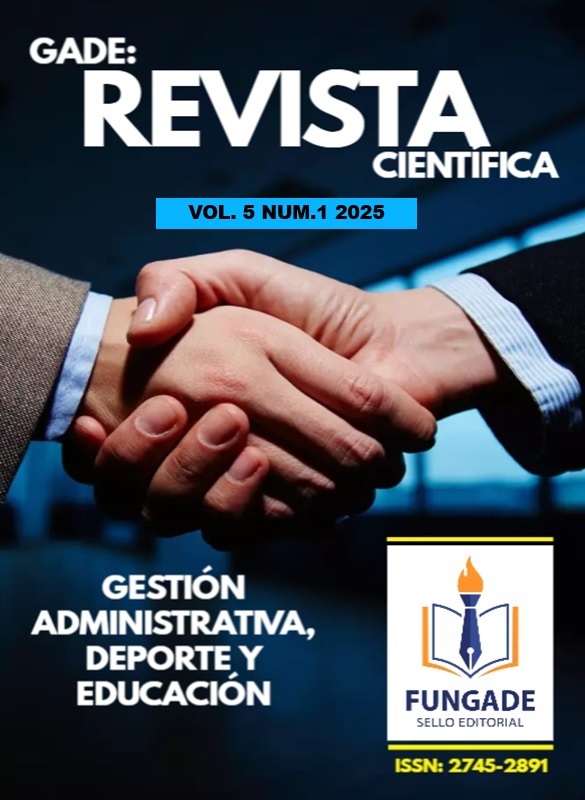Analysis of motor development through dance of grade 3 students at the Villa Margarita Educational Institution
Abstract
Dance is a fundamental activity as a means of expression through bodily movement to achieve necessary skills. It emerges as an art, enhancing expressive capacity, cognitive ability, and physical dexterity in motor development. From a formative perspective, this article aims to analyze the motor development through dance of third-grade students at Villa Margarita Educational Institution. This article is based on a qualitative approach and a constructivist paradigm, in which a case study with a focus group was conducted. The population consisted of third-grade students; for this study, a purposive sampling of 30 samples was conducted to ensure representativeness. Through interviews, improvements in coordination, rhythm, and body language were identified among the participants. The results show that most students associate dance with movement, that they enjoy exploring, expressing themselves, and participating in collaborative activities. Thus, it is concluded that dance is an effective pedagogical tool for enhancing motor development and meaningful learning, in addition to fostering a more dynamic, inclusive, and healthy school environment, and strengthening a child's overall development.
Downloads
References
Arnaiz, P. (2014). Psicomotricidad y aplicaciones curriculares. Psicomotricidad. Revista de Estudios y Experiencias, 43-62.
Arzuaga, E. J. (2021). Las danzas folclóricas del caribe para estimular la motricidad gruesa. Revista Huellas, 7(2).
Cameron, K. L., McGinley, J. L., Allison, K., Fini, N. A., Cheong, J. L., & Spittle, A. J. (2020). Dance PREEMIE, a Dance Participation intervention for Extremely prEterm children with Motor Impairment at prEschool age: an Australian feasibility trial protocol. BMJ open, 10(1), e034256.
Castañer, M. (2000). Expresión corporal y danza.
Fuentes Serrano, Á. L. (2006). El valor pedagógico de la danza
García, A. I., & Pastor, V. M. (2014). La expresión corporal y la danza en educación infantil. La Peonza: Revista de Educación Física para la paz, 9, pp. 3-26.
Gibbons, A., & Nikolai, J. (2019). Participatory approaches to physical activity and dance research with early childhood teachers. Australasian Journal of Early Childhood, 44(3), 298-308.
Gutiérrez, E., & Castillo, J. A. (2014). Reflexiones sobre la concepción del cuerpo y del movimiento para una educación integral de la primera infancia. Praxis pedagógica, 14(15), 15-42.
Hasselbach, B. (1979). Didáctica de la danza. Objetivos de aprendizaje en la educación de la danza. VV. AA., Música y Danza para el niño, 65-92.
Patajalo-Guambo, A. I., Vargas-Cuenca, G. M., Ávila-Mediavilla, C. M., & Bayas-Machado, J. C. (2020). La danza en el desarrollo de las habilidades motrices básica en edades escolares. Polo del conocimiento, 5(11), 12-28.
Ricoy Lorenzo, C. (2006). Contribución sobre los paradigmas de investigación
Riquero Conforme, L. A. (2017). La danza y su incidencia en el desarrollo motriz de los estudiantes de 8vo y 9no año de la Unidad Educativa Clemente Baquerizo (Bachelor's thesis, Babahoyo: UTB, 2017).
SEIRUL-LO, F. (1991): "El papel de la E.F. de Base en el desarrollo psicológico y social del niño", Revista de Educación Física. n°38. 32-34.
Silva, M. G. S., & Catuto, L. G. B. (2024). La danza como estrategia para desarrollar las habilidades motrices básicas en edades formativas. MENTOR revista de investigación educativa y deportiva, 3(9), 986-1000.
Zuluaga Naranjo, E., & Londoño Cuervo, A. (2021). La danza, una estrategia pedagógica de fortalecimiento de las habilidades motrices, en estudiantes de tercer, cuarto y quinto, del centro educativo La María de Mistrató Risaralda
Copyright (c) 2025 Andry Lucia Mejía Caldera, Roger Eli Torres Vásquez,Juan Carlos Ramos Bello

This work is licensed under a Creative Commons Attribution-NonCommercial-NoDerivatives 4.0 International License.






